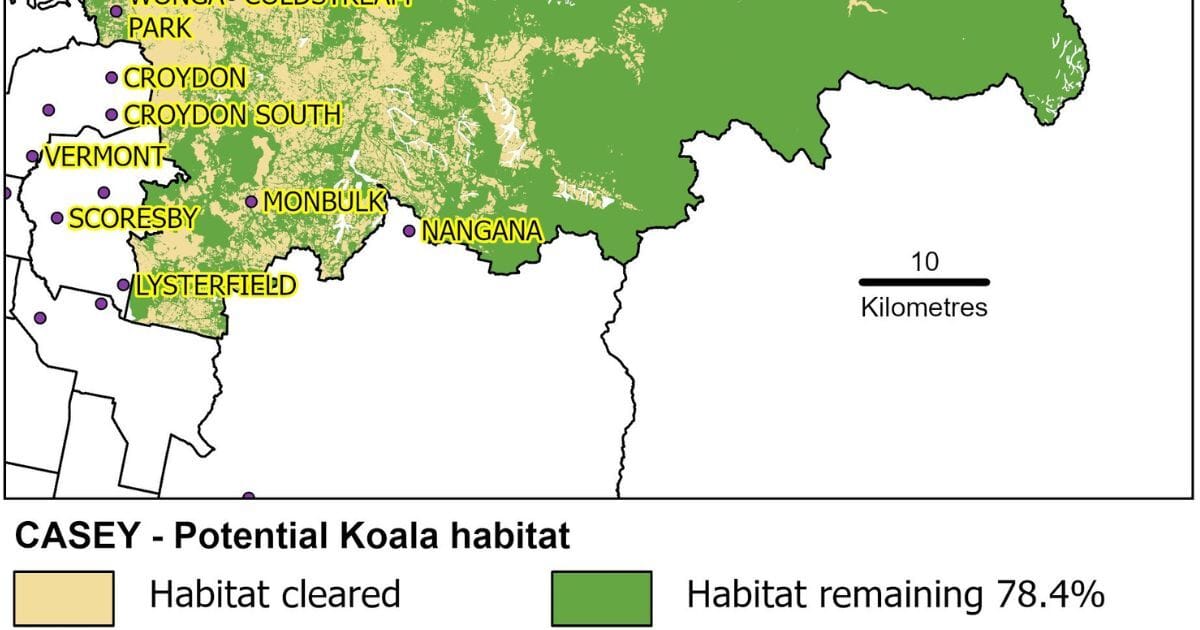In the Dandenongs, there are plenty of eucalypts, but fewer than 100 koalas. What happened?
The AKF has estimated there were as few as 49,000 koalas across Australia, down from about 600,000 in the early 1900s.

In the late 1800s and early 1900s, some eight million koala skins were shipped from Australia to London and New York.
The impact of the trade in koala pelts is still being felt more than 120 years later in places like the Dandenong Ranges, according to Australian Koala Foundation (AKF) Chief Executive Deborah Tabart.
More than 200 years after white settlement in Australia, nearly 80 percent of Casey’s koala-friendly eucalypt forests remain, yet it’s believed there are fewer than 100 koalas that now call it home.
Tabart fears the existing population could be all but gone in three generations.

With wide parts of the western part of the Casey electorate not appropriate for koalas, there is still a wide area of the eastern sections with viable homes. However, populations are continuing to dwindle.
What is threatening koala populations?
She said the “pressure of urbanisation” was a key factor leading to the reduction and fragmentation of koala populations.
“You cut down habitats, you cut down their homes,” she told the Eastern Melburnian.
Fires razing habitats have played a role, while changing rainfall behaviours and more carbon dioxide in the atmosphere due to climate change have altered the amount of protein and water in gum leaves and increased the level of toxic tannins.

What can be done?
Since 1996, the AKF has lobbied the Federal Government to legislate a Koala Protection Act.
Tabart said koalas are “functionally extinct”, meaning there were not enough protections in place to manage population recovery.
“All of a sudden, maybe three generations and they’re gone,” she said.
“If this animal is so important to Australia and the world, which we know it is, then why wouldn’t our country be very prescriptive about how to protect it?”